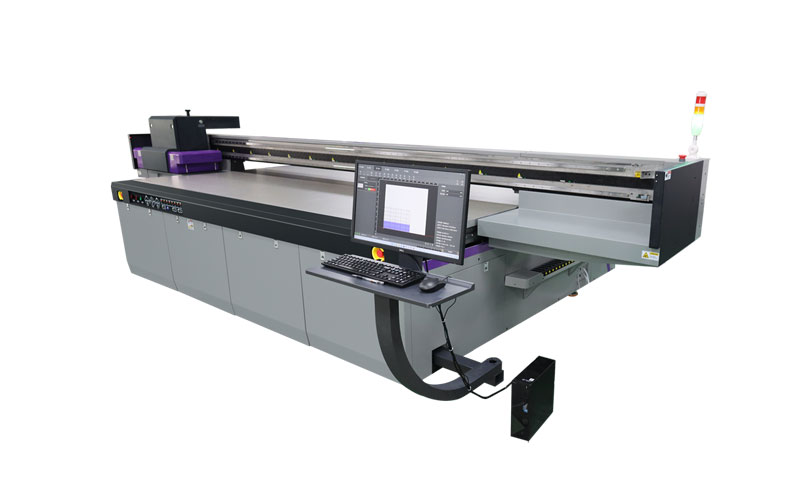How to Choose the Best UV Flatbed Printer for Your Budget and Needs?
How to Choose the Best UV Flatbed Printer for Your Budget and Needs?
In the realm of digital printing, UV flatbed printers have revolutionized the way we approach various printing tasks, especially for businesses that require high-quality prints on diverse materials. These printers utilize UV-curable inks that instantly dry when exposed to ultraviolet light, enabling them to print on a wide range of substrates, including glass, plastic, metal, wood, and more. Choosing the best UV flatbed printer for your specific budget and needs can be a daunting task, given the multitude of options available in the market. This comprehensive guide aims to simplify the process by outlining key factors to consider before making a purchase.

**1. Understand Your Printing Needs
The first step in selecting the right UV flatbed printer is to clearly define your printing requirements. Consider the following questions:
What types of materials will you be printing on? UV flatbed printers can handle a variety of materials, but some models may excel at printing on specific surfaces.
What is the maximum print size you need? The print bed size determines the largest dimension of the material you can print on.
What is your expected print volume? Higher print volumes may necessitate a more robust, industrial-grade machine.
What level of print quality do you require? Resolution, color accuracy, and detail reproduction are crucial for applications like fine art reproductions or product packaging.
**2. Evaluate Your Budget
UV flatbed printers come in a wide range of price points, from entry-level models for small businesses to high-end industrial printers. It’s essential to establish a budget that aligns with your financial capabilities while also considering the long-term value the printer will bring to your business. Remember to factor in additional costs such as maintenance, ink, and potential upgrades.
**3. Consider Print Quality and Speed
Resolution: Look for printers with high DPI (dots per inch) capabilities for sharper, more detailed prints.
Color Accuracy: If color consistency is crucial, opt for printers with advanced color management systems.
Print Speed: Faster print speeds are beneficial for high-volume printing but may come at the cost of print quality. Find a balance that suits your needs.
**4. Assess Ink and Material Compatibility
UV inks offer superior durability and resistance to fading, scratching, and chemicals. However, not all UV flatbed printers use the same type of ink or support the same range of materials. Check if the printer you’re considering can handle the specific materials and ink characteristics you require.
**5. Evaluate Ease of Use and Maintenance
User Interface: A printer with an intuitive control panel and software can save time and reduce operator errors.
Maintenance: Consider the ease of cleaning, ink replacement, and overall maintenance routines. Look for printers with replaceable parts and accessible service manuals.
**6. Explore Additional Features and Upgrades
Automation: Some printers offer automated features like material loading/unloading, which can increase efficiency.
Upgradability: Consider if the printer allows for future upgrades, such as increased print bed size or additional print heads.
Software Compatibility: Ensure the printer is compatible with your design and workflow software.
**7. Research Brand Reputation and Customer Support
Brand Reliability: Choose a printer from a reputable brand with a proven track record of reliability and customer satisfaction.
Customer Support: Good after-sales service and technical support are crucial. Look for brands that offer comprehensive training, on-site service, and remote assistance.
**8. Read Reviews and Seek Recommendations
Before finalizing your decision, read reviews from other users in your industry. Their experiences can provide valuable insights into the printer’s performance, durability, and potential issues. Additionally, consider seeking recommendations from industry peers or professionals who have experience with UV flatbed printers.
**9. Consider Total Cost of Ownership
Beyond the initial purchase price, consider the long-term costs associated with the printer, including ink consumption, maintenance, energy consumption, and potential downtime due to repairs or upgrades. A printer with a higher upfront cost may offer better efficiency and lower operating costs over its lifespan.
**10. Test Before You Buy
If possible, request a demo or trial period with the printer. This hands-on experience will give you a better understanding of its capabilities, ease of use, and whether it meets your specific needs.
Conclusion
Selecting the best UV flatbed printer for your budget and needs is a multifaceted decision that requires careful consideration of various factors. By clearly defining your printing requirements, evaluating your budget, assessing print quality and speed, considering ink and material compatibility, evaluating ease of use and maintenance, exploring additional features, researching brand reputation, reading reviews, considering the total cost of ownership, and testing before you buy, you can make an informed choice that aligns with your business goals and ensures a successful investment in UV flatbed printing technology. Remember, the right printer can significantly enhance your printing capabilities, expand your service offerings, and ultimately drive business growth.
